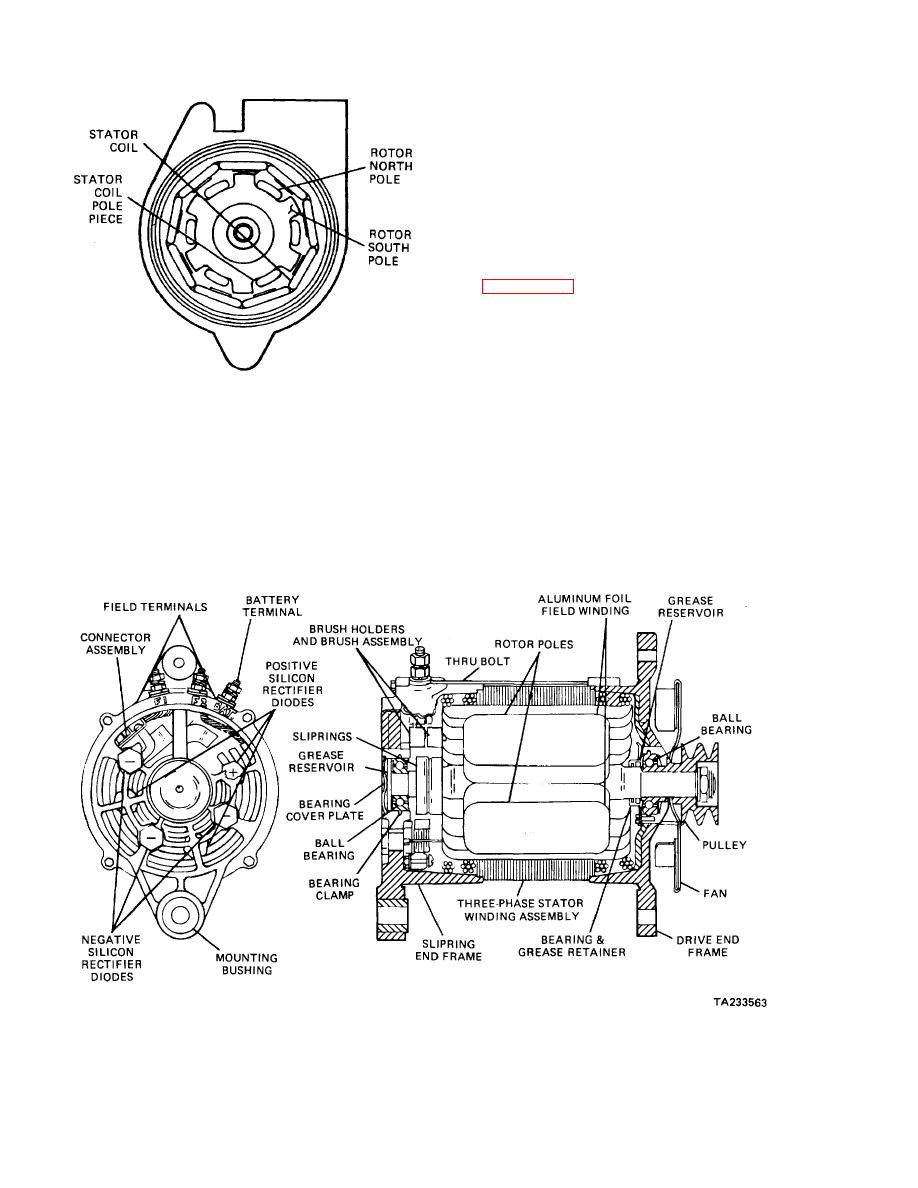
TM 9-8000
temperature, high-altitude, or high-speed applications.
Brush arc is an explosion hazard; fuel or oil cannot be
used safely as a coolant. The rotor winding is hard to
cool and is relatively unreliable in high-speed or rough-
drive applications that cause stress on rotor windings
and insulation.
The wound-pole alternator has an
extensive history of development, but is best suited for
low- speed applications in a limited range of
environments.
b. Lundell Alternator. The Lundell rotor, as shown in
windings around the axis of the rotor shaft, resulting in
each end of the shaft assuming a polarity. Coupled to
each end are interspaced fingers forming opposite
polarities that provide an alternating field when rotated.
Field excitation is achieved through slipring conduction.
Figure 13-27. Rotor-to-Stator Relationship.
The following are advantages of the Lundell rotor. This
rotor has a simple rotor winding construction and
polarity occurs on successive poles. Pole excitation
stationary output current windings. The disadvantages of
current is obtained through sliprings. The advantages of
the Lundell rotor are windage (air resistance) losses and
the wound-pole alternator are a wide speed range:
the use of sliprings and brushes.
output current windings are stationary, and sliprings carry
low field excitation current.
The following are
c. Lundell Inductor. This generator type differs from
disadvantages of the wound-pole alternators: Brushes
the previously described Lundell type, in
and sliprings wear, are affected by contamination,
produce contaminating carbon dust, may cause voltage
modulation, and are not reliable for high-
Figure 13-28. Wound-Pole Alternator.
13-27



 Previous Page
Previous Page
